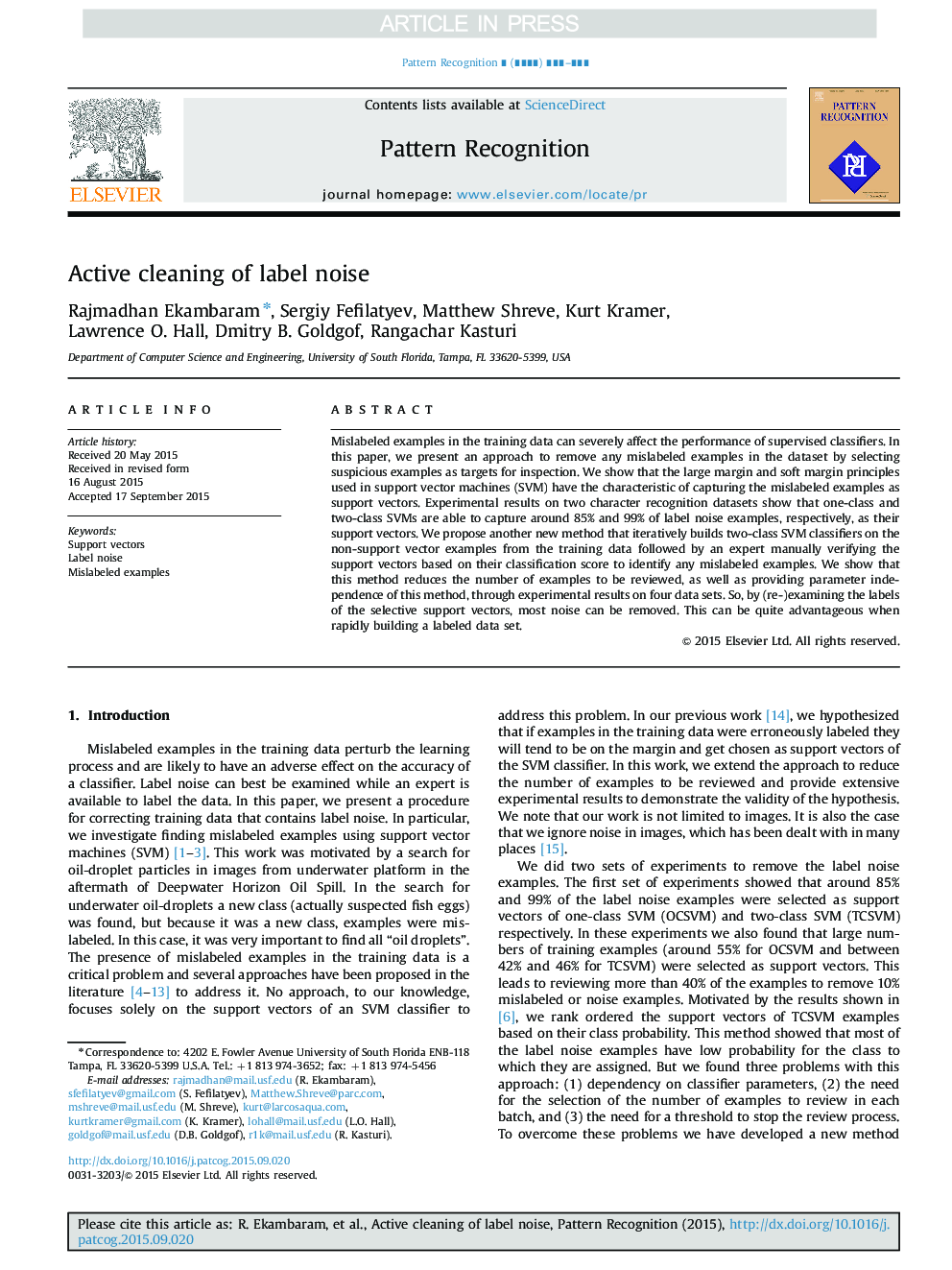| Article ID | Journal | Published Year | Pages | File Type |
|---|---|---|---|---|
| 6940044 | Pattern Recognition | 2016 | 18 Pages |
Abstract
Mislabeled examples in the training data can severely affect the performance of supervised classifiers. In this paper, we present an approach to remove any mislabeled examples in the dataset by selecting suspicious examples as targets for inspection. We show that the large margin and soft margin principles used in support vector machines (SVM) have the characteristic of capturing the mislabeled examples as support vectors. Experimental results on two character recognition datasets show that one-class and two-class SVMs are able to capture around 85% and 99% of label noise examples, respectively, as their support vectors. We propose another new method that iteratively builds two-class SVM classifiers on the non-support vector examples from the training data followed by an expert manually verifying the support vectors based on their classification score to identify any mislabeled examples. We show that this method reduces the number of examples to be reviewed, as well as providing parameter independence of this method, through experimental results on four data sets. So, by (re-)examining the labels of the selective support vectors, most noise can be removed. This can be quite advantageous when rapidly building a labeled data set.
Keywords
Related Topics
Physical Sciences and Engineering
Computer Science
Computer Vision and Pattern Recognition
Authors
Rajmadhan Ekambaram, Sergiy Fefilatyev, Matthew Shreve, Kurt Kramer, Lawrence O. Hall, Dmitry B. Goldgof, Rangachar Kasturi,
